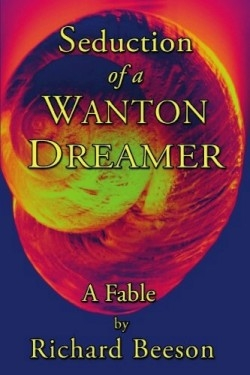
Seduction of a Wanton Dreamer
A Fable
Tony Fellows, theater director and would-be novelist, finds himself immersed in a dream from which he cannot awake when his wife of twenty-five years leaves him. Convinced that she will return, he decides to write a novel while he waits. He leaves New York for Sag Harbor in hopes that the isolation will reconnect him with his creativity. On his first day he meets Loretta Whitby, an eccentric woman with pet geese, who becomes his landlady. She offers to be his muse and promises Tony that he will only see results if he agrees to do the things she requests. Loretta sees herself as an unofficial New Age mystic and uses hypnosis, past life regression, and sex to compel Tony to write the book of his dreams. It works—until he discovers something crucial that Loretta has kept from him. Tony goes to great lengths to keep her, despite what he now knows. When his plan doesn’t work, Tony goes into a tailspin and leaves town.
Reeling from his Sag Harbor experience, Tony spends a month on the Alean Highway en route to the Gulf of Alaska. Obsessed with finding an island he dreamed of off the Alaska coast (which locals say doesn’t exist) he eventually runs low on funds and becomes homeless. He hallucinates that he is trapped in the Afterjoint—a purgatory for departed souls. It’s here that he meets a new creative force, and although she looks different, she’s much like Loretta. Tony continues to loose touch with reality, and his dreams become more frequent and longer. His setting has changed but he is unable to see that the situation is the same and he continues to unravel.
Author Richard Beeson is a former New York City Opera orchestra manager who began writing this book, his first novel, in 1988. It is loosely based on experiences he had after many “near-death dreams and hallucinations” brought on by radical cancer treatment.
Seduction of a Wanton Dreamer is an enjoyable, character-driven story written in the popular fiction style. It’s a rich work of magical realism with symbology representative of creative struggles, the tortured artist, unfulfilled lives, and fears of castration and abandonment. The plot is skillfully developed and it’s sometimes difficult for readers to determine whether they’re in the character’s dream or his reality.
Multiple story layers and symbols—including Tony’s Walter Mitty-like hallucinations, competing mythological gods, numerology, and dominos enrich the story’s texture. Symbolic figures—like the kangaroo-sized dinosaur god Lugh who talks like a 1920s gangster and blows smoke out of his ears, quirky pets like a grotto of pet whales that carry travelers in their mouths, and tamed wild geese—infuse a bit of sideline humor into this dramatic tragedy.
Readers should enjoy this symbol-heavy, richly detailed fantasy novel. Its only real flaw is its poorly designed cover, which only proves that you can’t judge a book by its cover.
Disclosure: This article is not an endorsement, but a review. The publisher of this book provided free copies of the book and paid a small fee to have their book reviewed by a professional reviewer. Foreword Reviews and Clarion Reviews make no guarantee that the publisher will receive a positive review. Foreword Magazine, Inc. is disclosing this in accordance with the Federal Trade Commission’s 16 CFR, Part 255.
